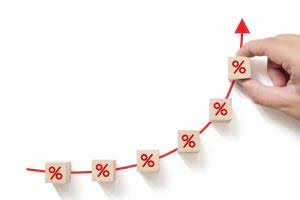Content

In short, accounting profit is a more rigorous approach to determining profits than the underlying profit calculation. The general format of the profit and loss statement, as presented from top to bottom, is noted below. The outcome of a P&L can vary, depending on whether a business is using the cash basis or accrual basis of accounting. These different methods can be impacted by the timing of cash flows entering and departing a business. Balance SheetA balance sheet is one of the financial statements of a company that presents the shareholders’ equity, liabilities, and assets of the company at a specific point in time. It is based on the accounting equation that states that the sum of the total liabilities and the owner’s capital equals the total assets of the company. The accounting professionals record the ledger accounts, along with the type of sales, purchase, direct and indirect expense, and income in this statement.
- To ensure accurate P&L accounting, the professionals prepare separate ledgers first and then create a trial balance and profit and loss statements.
- Net Operating Profit – Gross margin minus selling and administrative expense.
- It measures how much your business is spending and earning over a certain period of time, like monthly, quarterly or annually.
- Plus, you can also use your profit and loss statement to compare your company against similar businesses and create industry benchmarks.
- Finally, your income statement shows you the outcome of your decisions and how your business is operating.
I have answered the most common questions about P&L statements below. Examining these numbers can give you a good idea about the financial health of your business.
Understanding Profit And Loss Reports
Depreciation is the reduction in the value of any of your business assets, like machinery or equipment. This number also conveys information about how competitive your business is or can be in the near future. Usually, this is detailed in a separate table and the sum total is imported into the P&L statement.
- Interim P&L reports may be abbreviated versions of the annual report.
- There might be terms you’ve never seen before, so it’s useful to gain an understanding of what you’ll find in a profit and loss statement.
- Under the simple single-step method, a business totals revenues and subtracts expenses to get the bottom line.
- You can obtain current account balances from your general ledger such as cash and current accounts receivable balances.
- Some numbers depend on accounting methods used (e.g., using FIFO or LIFO accounting to measure inventory level).
- These are categories that you, too, will use when constructing a P & L statement.
- Depreciation is the reduction in the value of any of your business assets, like machinery or equipment.
On the other hand, a balance sheet is another important financial report to report a business’ assets, liabilities, and shareholders’ equity. Combining the balance sheet with the P&L statement gives you a good overall snapshot of a company’s financial health. First, you can pull together your own statement and create the document using a spreadsheet. We’ve created a simple profit and loss statement template for you to use here. A single-step profit and loss statement is a bit more straightforward. It adds up your total revenue, then subtracts your total expenses, and gives you your net income. Operating earnings are sometimes called operating profit or operating income.
Cost Of Goods Sold Cogs
For manufacturers, if containers or packaging is an integral part of the product, then these expenses are included in the costs of goods sold. If they are not integral to the product, then these expenses would be recorded as selling expenses.

Julius Mansa is a CFO consultant, finance and accounting professor, investor, and U.S. Department of State Fulbright research awardee in the field of financial technology. He educates business students on topics in accounting and corporate finance. The steps below explaining how to create a profit and loss statement also apply to pro forma statements, except the latter will have projected figures instead of real ones. The most important and critical information is included in the main P&L report, in summary form.
How To Analyze A Profit And Loss Statement P&l
A business might like to report a more favorable profit figure that excludes one-time losses and rare events, on the grounds that this alternative number is more representative of its performance. The intent behind the use of underlying profit is to present how much a business could earn if it were not impacted by unusual events. The underlying profit figure is frequently presented https://www.bookstime.com/ to investors who are contemplating investing in an entity. The problem with the underlying profit figure is that unusual and infrequent events still occur, and are part of the ongoing mix of factors that result in profits or losses. Also, there is no regimented approach to what is included in the underlying profit figure, since it is not promulgated by any regulatory body.

Net IncomeNet income for individuals and businesses refers to the amount of money left after subtracting direct and indirect expenses, taxes, and other deductions from their gross income. The income statement typically mentions it as the last line item, reflecting the profits made by an entity. Analysts must go beyond the profit and loss statement to get a full picture of a company’s financial health. To properly assess a business, it’s critical to also look at the balance sheet and the cash flow statement. In the figure, the P&L report terminates at the operating earnings line; it does not include interest expense or income tax expense.
Step 2: Calculate Cost Of Goods Sold
If you search online, you can find a broad range of profit and loss statement templates and examples that you can use for your own business. Operating IncomeOperating Income, also known as EBIT or Recurring Profit, is an important yardstick of profit measurement and reflects the operating performance of the business. It doesn’t take into consideration non-operating gains or losses suffered by businesses, the impact of financial leverage, and tax factors. It is calculated as the difference between Gross Profit and Operating Expenses of the business. It shows the revenues earned in a period, matched with the expenditures incurred in the same period, to arrive at a figure of net profit or loss for that period. Revenues and expenses for non-profit organizations are generally tracked in a financial report called the statement of activities. As such, this report is sometimes called a statement of financial activities or a statement of support.
Accounting profit is revenues minus the expenses mandated by an accounting framework, while economic profit is revenues minus the opportunity costs of the assets being used. Opportunity costs are the profits lost when one alternative is selected over another. This means that deriving economic profit requires an analysis of the alternatives that could have been acted upon, rather than the decision actually taken. In short, the key difference between the two concepts is that economic profit is reviewed while making a decision, while accounting profit reveals the outcome of the decision that was made. Companies must comply with a set of rules and guidelines known as generally accepted accounting principles when they prepare these statements. Your total revenue is called your top line — and it’s an important metric your profit and loss statement can help you track over time. A profit and loss statement shows how much your business is making and spending over a period of time.
It begins with an entry for revenue, known as the top line, and subtracts the costs of doing business, including the cost of goods sold, operating expenses, tax expenses, and interest expenses. The difference, known as the bottom line, is net income, also referred to as profit or earnings. When used together, the P&L statement, balance sheet, and cash flow statement provide an in-depth look at a company’s financial performance together.
Profit And Loss Accounts Explained
A profit and loss statement aggregates the revenues, expenses, and profits or losses of a business. This report portrays the financial results of a business for a specific period of time, such as for a month, quarter, or year. If it is being reported by a publicly held company, the P&L also includes both basic and diluted earnings per share information. The profit and loss statement is considered by many to be the most crucial of the financial statements, for it reveals the ability of the reporting business to generate a profit. As such, it is used to plan for the revenue enhancements and cost reductions needed to improve profitability. The statement is particularly useful when viewed on a trend line, to see how an organization is faring over time.
Yarilet Perez is an experienced multimedia journalist and fact-checker with a Master of Science in Journalism. She has worked in multiple cities covering breaking news, politics, education, and more. Her expertise is in personal finance and investing, and real estate.
How To Create A Profit And Loss Statement
The articles and research support materials available on this site are educational and are not intended to be investment or tax advice. All such information is provided solely for convenience purposes only and all users thereof should be guided accordingly. The resulting balance at the bottom of a profit and loss account represents either a net profit or net loss that will be transferred to the capital account. Net Operating Profit – Gross margin minus selling and administrative expense. Direct Labor – The cost of labor to convert raw materials into finished products. Direct Labor is included in the cost of goods sold for manufacturers. Labor — direct labor is the cost of labor to convert raw materials into finished products.
- A profit and loss account can help you understand this in a little more depth.
- The profit and loss report is an important financial statement used by business owners and accountants.
- This means that deriving economic profit requires an analysis of the alternatives that could have been acted upon, rather than the decision actually taken.
- There is a need therefore to monitor this regularly in order to run a business with confidence.
- The next thing you need to do is calculate all of your operating expenses.
- Direct and indirect expenses are monitored by a P&L report, which provides information on indirect expenses in order to help you control these costs.
The profit and loss statement uses data from your business and three simple calculations to tell you the net profit of your company. Usually, it helps to know where you are going before you get there, so here’s a shell of a P & L statement and a completed P & L statement for the fictional ABC Company. WHAT TO EXPECTThis Business Builder will guide you through a step-by-step process to create a profit and loss statement for your business. This line item contains both the interest income earned and interest expense incurred by the business during the reporting period. Profit and loss figures are calculated by deducting the total expenses from the revenue generated from different sources in a fiscal quarter or year.
Fortunately, there are common line items that are generally included in most P&L statements. Understanding these concepts will help you put together, and analyze, profit and loss statements. That’s why it’s important to understand all three major financial statements that I mentioned at the beginning. Put another way, a profit and loss statement tells you whether or not your business is making money. Small business owners can use a P&L statement to assess business performance, identifying room for improvement and new strategies for growth. You have considerably more control over your internal costs than your external—taxes, interest payments, and other expenses are partly determined by the work of financial professionals.
Profit is calculated by subtracting Total Expenses from Total Profit. If Income is greater than Expenses there is a Profit, but if Expenses are greater than Income, then a Loss arises. With it, you can assess whether your business is generating more revenue periodically. Take for example the growth in cost and expenses vs growth in revenue from 2018 to 2019. If a large amount of capital is constantly going and out of your business, it can be hard to determine whether you’re making a profit or not. You’ll have enough to purchase more products to sell or invest in the growth of your business. To view how the values are calculated for a particular ledger account, click the relevant line.
Stopping At Operating Earnings
Your profit and loss statement can influence some of your most important financial decisions. Investors and lenders might ask to look at it, too, before doing business with you.
Create The Standard Report
A profit and loss statement, or income statement, is one of a company’s important financial reports. It tells management and interested investors the company’s revenues, expenses, and profits over a specific period of time. Looking at trends in a company’s profit and loss statements over time can give you important clues about where the business could be headed. Profit and loss statements provide you with insight into the financial health of your business over a period of time. That’s what sets it apart from your balance sheet, which only represents your finances at a particular moment. You can use the income statement to calculate several metrics, including the gross profit margin, the operating profit margin, the net profit margin, and the operating ratio. Together with the balance sheet and cash flow statement, the income statement provides an in-depth look at a company’s financial performance.
The labor that went into the unsold inventory is not included in the cost of goods sold section. And yet, they are not a fixed expense either, so the labor that went into unsold goods is not included at all in your current P&L statement. Those five main totals are all bolded, but the income, cost of goods sold, and expenses are all broken down into multiple line items. Here’s Accounting Profit and Loss a working profit and loss template complete with gross margin calculation built-in. Will you be assessing business progress monthly, quarterly, or annually? Keep in mind that short time frames probably won’t yield any meaningful data, e.g., anything less than a month. On the other hand, you don’t want to overwhelm yourself by digging into years and years worth of data.

